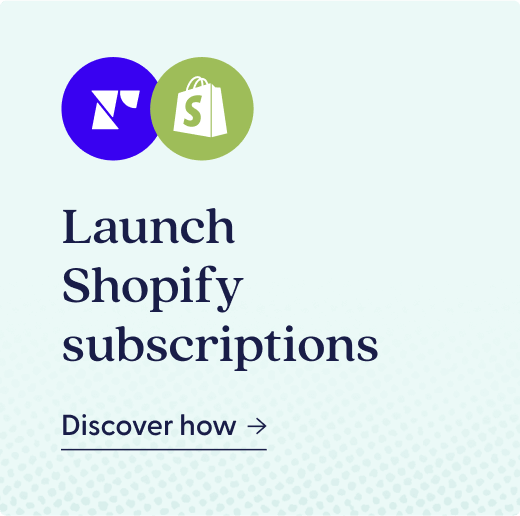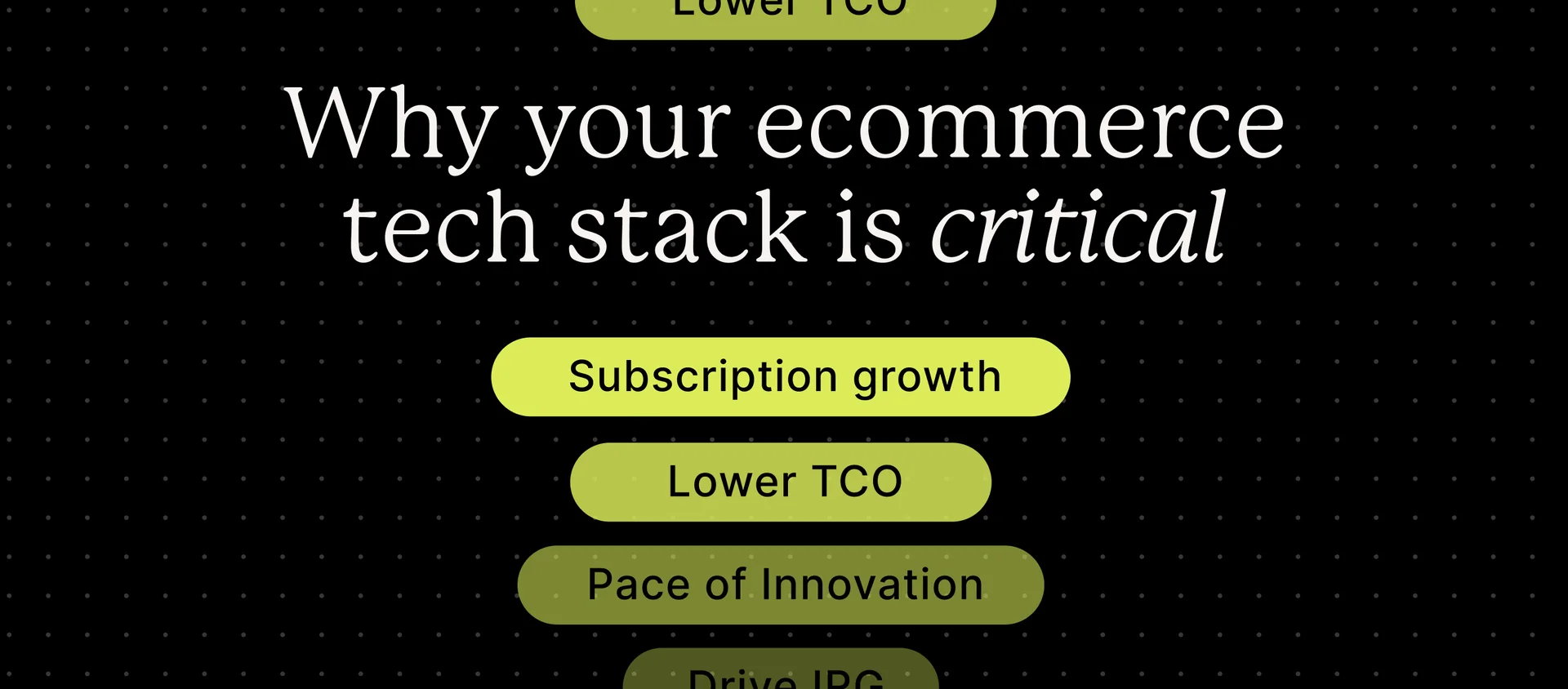The operational logistics of planning inventory, packing your deliveries, and shipping them to your customers are at the heart of your subscription business. Figuring out when to handle things in-house, when to outsource, and how to optimize your operations and fulfillment can make the difference between a profitable product market fit and a failing business. As shipping costs have continued to rise in the last couple of years, it’s more important than ever to make the right business decisions.
Note: If you’re interested in details about international shipping and fulfillment, please check out some great content written by our partners at Shipbob and Passport.
Determining your stage
It’s important to first understand what stage your business is at before you identify the best solutions for your operations, logistics, and fulfillment. For example, if you are a brand new subscription business, you need to focus on quality assurance with your packaging and materials to ensure a quality experience for your newly acquired customers. It’s essential to focus on maintaining a connection to your product and customer as you establish market fit. New businesses are usually best left handling things in-house. Expansion stage businesses, who’ve established product and market fit, will likely focus on establishing a relationship with a third-party logistics (3PL) partner to optimize their operations to handle their rapid growth. If you’re shipping hundreds of boxes a month, the benefits of using a 3PL start to outweigh the costs. Finally, a large and mature-sized company will likely focus on improving visibility into their shipping and logistics. An emphasis for companies at this stage is to refine their analytics tools so they can prioritize optimizations that will help scale the business, improve their profit margins, and leverage economies of scale.
That said, there are other factors that come into play as well. Our friends at Shipbob point out in their awesome guide on subscription box fulfillment that determining whether or not you should outsource your fulfillment to a 3PL depends on your monthly shipment volume, and the complexity of “kitting and assembly” your subscription business requires. For example, if you have a pretty standard set of SKUs that go into each box delivery, and they don’t require a lot of customization and packaging, a 3PL is likely the best way to go. If you have a premium box of the month club with rotating product SKUs, the ability for subscribers to further customize their individual boxes between shipments, and a lot of complex packaging, then very few 3PLs will typically handle this well. Building up your in-house fulfillment capabilities may make more sense in this case even if you’re operating at scale.
Overall, key considerations for fulfillment logistics are:
- Managing inventory
- Assembling and packing
- Delivering fast and on-time
- Customer support
- Costs for shipping and fulfillment
We’ll dive into each of these components below:
Managing inventory
Planning for inventory is essential when you’re managing subscriptions. If you also offer a one-time purchase option along with an option to subscribe and save, then you have to plan in advance to ensure your products are available for purchase on demand, as well as being available for your upcoming recurring subscription orders. Your subscription customers typically expect their deliveries on time on the same day each month, so you’ll also need to ensure your manufacturer/supplier is able to get the products over to your fulfillment center. The key is to avoid stockouts.
If you’re a newly started business, you’ll typically want to manage your own inventory. Select turnkey ecommerce platforms like Shopify and, ahem, Recharge update inventory for you and give the basic visibility into orders you need to fulfill.
Rapidly growing businesses may want to consider outsourcing their more complex inventory management to platforms like Shipstation, since they offer shipping, turnkey software that helps you manage your orders and inventory, and a portal for customers to track packages all in one place.
Mature businesses operating at scale, or any business that may have customers in diverse geographic locations, should consider distributing inventory across multiple fulfillment centers. This ensures they can deliver to their customers quickly and at a lower cost. Shipstation has a large network of fulfillment partners that you can reference, which includes global logistics platforms like Shipbob.
Assembling and Packing
A Dotcom Distribution Study found that over a third of people believed the use of branded packaging had an impact on their impression of the retailer/brand that shipped the item.
How your boxes look after they make it through the warehouse and ship to your merchant is incredibly important. From branded packaging to designing a box that delights your customers when they open it, your subscription deliveries are part of the rich experience you’re offering your customers. Customers typically want a deeper relationship with the brands they subscribe to, and packaging design is the first impression they get with your actual physical product.
Questions to ask:
- If you have multiple SKUs, how do your products fit together in a box?
- Is their unused space in your package?
- Is their sensitivity to damage or temperature when shipping?
- Can you add anything as a surprise gift or bonus?
- Recharge churn prevention tools can help you identify at what delivery in your customers’ subscription lifecycle typically results in the most cancellations/churn. With this knowledge, packing in a bonus free gift in the delivery beforehand can reduce this churn and keep customers engaged.
- How sturdy is your packaging? How will it look when it arrives at your customers’ doorstep?
- What are the dimensions and weight of your products? The more you know about this, the easier it will be to calculate your total costs.
As you navigate the above questions, you’ll want to ensure you have a good amount of space to store your product inventory, and that there is extra space for putting together an assembly line and organizing your finished packages. Make sure the storage area for your products is clean (no one likes animal fur in their box, unless that’s what you’re selling). You’ll also want to ensure the packing and storage itself doesn’t affect the aesthetics of your shipments, like stacked boxes getting squashed or damaged. Take a look at the location of your fulfillment and packing space. Ideally, it’s near commercial shipping docks, to ensure you’re not moving packages a long way to get them shipped out. All of the above points apply if you’re using a 3PL. You want to know they’re handling these things efficiently and with an attention to detail/quality.
If you’re labeling your own packages, you’ll want to consider the surface of the boxes you’re packing products in. Labels can peel off uneven or matted surfaces. If you’re handling label printing yourself, pick a label printer that is fast. You never want to have a major bottleneck in the fulfillment process, especially if you ship on a specific day of the month/week. Testing out your labeling and packaging with some sample quantities is a great idea to ensure the full lifecycle of a shipment works.
Delivering fast and on-time
When a customer subscribes to your product, they are engaging in a long-term relationship with your company. Building trust with your customer and ensuring that your products are delivered quickly and on time is tantamount to a successful subscription business.
When selecting the right shipping carrier, you’ll want to consider parcel consolidators and delivery services. Parcel consolidation means that several deliveries will be sent to the final destination in a single container. The shipments that arrive from various suppliers and locations are consolidated into a single shipment to save on shipping costs. In comparison, regular delivery services are typically faster and more customizable but are more costly.
When evaluating a carrier, you’ll want to review pricing, shipment history, and quality of service, with an emphasis on speed, managing returns, and damages. Additionally, reliable order tracking is essential so you know the exact delivery time. You’ll also want to evaluate the quality of their support team. If shipments are lost, damaged, or late, how helpful and communicative is the carrier’s customer support team?
Large carriers include UPS, UPSP, and FedEx, or Canada Post for Canadian-based businesses.
You can also evaluate a shipping partner or 3PL. These companies will handle the above but also have direct access, better conditions, and cheaper shipping prices that they can extend to you. That said, having someone else manage your products requires an investment of time, trust, and money.
Communication to customers
From the second a customer checks out or places a recurring order, they will typically want to know where their product is in the shipping lifecycle, and exactly when it’s going to arrive. If there are any delays, stockouts, or other issues with their order, the more pre-emptive the communication the better.
Most ecommerce platforms will message (e-mail and SMS) a customer with order confirmation notifications and product has shipped notifications. These platforms usually have a customer portal where customers can log in and track their order. Additionally, most shipping software and carriers have even more accurate tracking pages for customers to check.
Personalizing and branding these notifications and portal pages is a way to tie together the rich customer experience you’ve designed. Being responsive to questions or messages from customers who are having issues, or may just have great feedback, is a huge opportunity to build trust and loyalty with your audience.
Costs for shipping and fulfillment
Deciding upon your pricing strategy for shipping is one of the most important decisions you can make for your business. Free shipping, for example, can be a huge incentive for customers to buy from your brand, but can be very expensive. Merchants have offset these costs by leveraging the following strategies
- Bake the full or partial cost of free shipping into your product pricing
- Offer free shipping only when certain price or quantity thresholds are met
- Grant free shipping only to members and/or subscribers
- Distributing discount codes for free shipping to a smaller cohort of customers
There are plenty of merchants who don’t offer free shipping, finding it’s not the differentiator for their own product and business. They instead charge a flat rate that averages their typical cost of shipping. Other merchants also just pass the exact cost of shipping directly to the customer. To do this, they typically integrate shipping software into their ecommerce platform, and either offer major carrier rates (USPS, UPS, FedEx) and/or leverage third-party postage providers.
Recharge and Shopify both offer the ability to charge current carrier rates for shipping at checkout (or for recurring purchases). Recharge natively fetches shipping rates from Shopify for UPS, USPS, Canada Post, and FedEx and can be configured with custom shipping zones and rules. Additionally, Recharge has direct integrations with Passport, Shipstation, Advanced Shipping Rules, and Bespoke to ensure the correct rate and rules are calculated at checkout or for recurring purchases. These are especially handy if you’re shipping globally, or want to leverage custom shipping rates based on minimum quantities or for specific products.
The cheapest and fastest method to ship is typically via USPS Priority Mail Cubic Service. As long as your package does not exceed 18 inches, 20 pounds in weight, and .05 cubic feet in volume, then USPS will ship your package within 1-3 business days and calculate based on the outer dimensions of your package instead of weight. This can lead to huge cost savings. They also offer free package tracking and include $100 of insurance at no additional cost.
3PLs also may be able to offer cheaper rates on shipping that they only have access to. Shipbob points out that, “Very few fulfillment companies offer the attention to detail and manual processes necessary to successfully complete the second box that’s customized and curated — and those that do are often very expensive given the work and time involved to fulfill a single subscription order.”
They also add, “Any extensive kitting can be expensive or not provided by 3PLs, so we recommend pre-kitting items — assembling the boxes before shipping them to your fulfillment company — or working with your fulfillment company to create bundles of products that make orders easier to pick and pack.”
With a fulfillment provider, you’ll want to know how they can fetch the necessary submitted orders for fulfillment. This can be done with manual spreadsheet uploads or via ecommerce platform integrations. Recharge and Shopify will submit order data to many 3PLs like Shipbob or Shipstation via automated integrations. Be sure to evaluate what data these fulfillment companies fetch from the orders automatically submitted — for example, do they get the full details on what products go into the package?)
One additional great benefit to these 3PLs is that they also have software to update the customer on their shipment status.
In summary, as you evaluate what products are best for subscriptions and how to optimize your operations and logistical planning, you’ll want a comprehensive strategy that leads to sustainable profitability. As discussed, consider how you’re going to manage inventory, assemble, and pack your orders. Select a good shipping carrier or partner to ensure your prized packages arrive fast and on-time. Maintain clear communication with your customers so they know when they’re going to receive their package, and what to do if there are issues with delivery. Lastly, do some business modeling to factor in the costs for shipping and fulfillment and ensure your profit margins are worth your while!
There is some terrific reading material online on subscription and ecommerce shipping and logistics that we’ve assembled for your convenience as well:
Mastering the Internal Operations and Logistics Before Shipping
The Cheapest Way to Ship Subscription Boxes
Choosing the Best Shipping Software
3 Secrets to Cheaper Subscription Box Shipping
Subscription Box Fulfillment Guide



